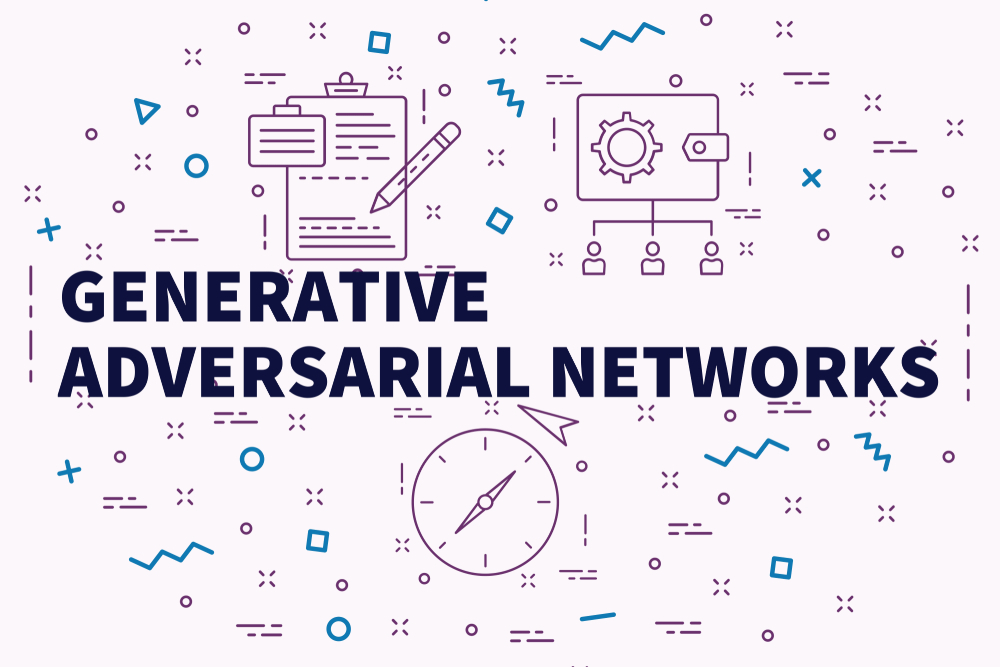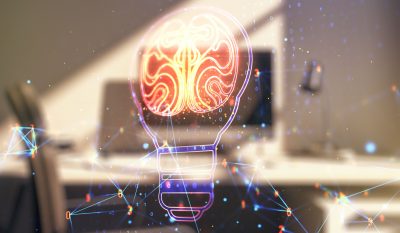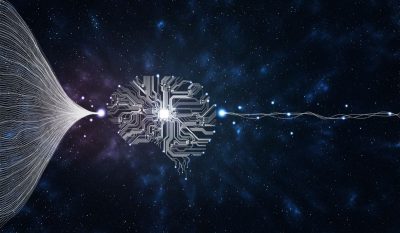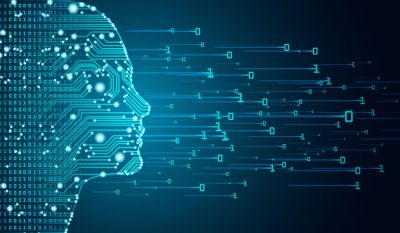Highlights:
- GAN-powered language models have the potential to revolutionize content creation, creative writing, and automated storytelling.
- GANs are increasingly used to generate realistic and diverse video content by working on video synthesis, prediction, and manipulation.
In the artificial intelligence domain, a groundbreaking technique has revolutionized the generative modeling field – Generative Adversarial Networks, or GANs.
The network system has garnered immense attention for its ability to generate realistic and novel content across various domains, including images, text, and even music. In this blog, we will surf through the prominent and emerging extent of GANs, understanding their architecture, training process, and wide range of applications. With an introductory glimpse, let’s comprehend the concept in terms of functionality.
What is a Generative Adversarial Network?
At the core of a GAN lies a creative interplay between two neural networks—the generator and the discriminator. The former creates synthetic data to match real data, while the latter aims to differentiate between the generated and authentic data. Through an iterative process of training and competition, these networks improve their abilities, developing high-quality, realistic content.
After understanding the fundamentals of Generative Adversarial Networks, let’s explore the intricate process of training these powerful networks to unleash their creative potential.
Generative Adversarial Networks Training
The GAN training sequence involves a delicate balance of adversarial competition. Initially, the generator produces crude outputs while the discriminator learns to differentiate between real and fake samples. As training progresses, the generator becomes more adept at creating realistic samples, and the discriminator refines its ability to distinguish between real and generated data. This tug-of-war between the two networks continues until the generator produces data almost indistinguishable from actual examples.
Having grasped the training aspect, let’s delve into why GANs have become a game-changer, revolutionizing various industries and unlocking new frontiers of creativity and innovation.
Why Generative Adversarial Network?
Technical advancement has paved the way for several methods in which machine learning algorithms and neural networks can be tricked into misclassifying data simply by adding some noise to the training datasets. However, new methods that can reduce the likelihood of misclassifying the images are being created due to advancements in machine learning. Consequently, it was observed that generative adversarial networks can create new data sets that resemble training data sets and can thus begin to visualize brand-new patterns. This makes GANs indispensable in core IT systems.
Now that we have explored the training aspect, let’s explore why GANs have emerged as game-changer.
Components of Generative Adversarial Network
The generator and discriminator are the two main parts of generative adversarial network architecture. As the name suggests, the generator creates a fake output of hidden data using training data sets and dupes the discriminator into believing that the counterfeit data is accurate.
The discriminator plays an investigatory role in separating training data from generated one, detecting anomalies in data samples produced by the generator, and determining if the information is fake or authentic. However, this entire process continues until the generator triumphs and, using simulated data, makes the discriminator appear false.
The separate functions of both networks are presented as follows:
Generator: The generator is an unsupervised machine-learning technique that produces fictitious samples based on real training data sets. Additionally, it is a neural network with activation, hidden layers, and loss function.
To prevent the discriminator from being able to distinguish between actual output and output made by the generator, the generator primarily concentrates on creating false data using the feedback provided by the discriminator.
Discriminator: It serves as a supervised machine learning method in which a straightforward classifier is chosen to distinguish between authentic and fraudulent data. Nevertheless, it receives feedback from the generator and is trained using real training data sets.
A grasp of the building blocks of a GAN lays the foundation for understanding how these networks work to generate remarkable outputs.
How do Generative Adversarial Networks Work?
As mentioned, GAN incorporates two neural networks, generator G(x) and discriminator D(x). To trick the discriminator, the generator constantly attempts to create fictitious data like training data, i.e., new data instances. At the same time, the discriminator evaluates the veracity of the data to distinguish between fake and authentic data. Both neural networks operate simultaneously to learn from complicated inputs like photos, audio, or video files.
Suppose we attempt to create handwritten numbers like that of the MNIST dataset. The discriminator will try to recognize the accurate MNIST dataset instance as the genuine deal. In the meantime, the discriminator receives fresh synthetic images from the generator. Even if the pictures are unreal, the generator will recognize them as accurate. To trick the discriminator, it generates as many handwritten digits as possible. The discriminator’s goal is to spot images from the generator as fake.
Shedding light on how these powerful models operate and produce impressive results sets the stage for exploring the different types of GANs.
Types of Generative Adversarial Networks
1) Vanilla GAN: This has been the basic GAN model in which the generator and discriminator are straightforward multi-layered algorithms. It uses a simple calculated gradient to optimize the mathematical equation.
2) DCGAN: One of the most well-known GAN implementations is DCGAN or Deep Convolutional GAN. Here, ConvNets are used instead of a multi-layered perceptron. Convolutional strides and no max-pooling are used in the content structure. Besides, ConvNets’ layers do not all connect at the same time.
3) Least Square GAN: In this model, a discriminator is represented by the least-square loss function. Pearson divergence is automatically minimized whenever the least square GAN’s objective function is involved.
4) Conditional and Unconditional GAN: A deep learning algorithm with additional parameters is what this term means. Labels in unconditional and conditional generative adversarial networks are maintained in a way that makes it simple to categorize the discriminator’s input.
5) Auxiliary Classifier GAN: Auxiliary Classifier or ACGAN is an improved version of convolutional GAN. Its discriminator provides information on the source of the input picture and classifies an image as real or fake.
6) SRGAN: Domain transformation, sometimes referred to as Super Resolution or SRGAN is typically used to convert low-quality images to high resolution.
7) Laplacian Pyramid GAN: The Laplacian Pyramid is a linear and reversible image representation consisting of multiple levels of band-pass images separated by an octave and a low-frequency residual. This technique utilizes multiple generator and discriminator networks operating on different Laplacian Pyramid levels. This method’s primary motivation is to generate exceptionally high-quality photographs.
8) Info GAN: This is the most recent and most sophisticated generative adversarial network for unsupervised machine learning. It aims to learn interpretable and disentangled representations by encouraging the generator to capture specific latent variables related to meaningful features.
Now that we’ve covered the different GAN types, it’s time to delve into the real-world applications, where they have proven to be a driving force, igniting innovation and unlocking endless possibilities.
Applications of Generative Adversarial Networks
1) Image Synthesis
GANs have enabled remarkable advancements in image synthesis. They can generate highly realistic images that resemble real photographs, opening possibilities for art, fashion, and design industries. Additionally, generative adversarial network models can be used for image-to-image translation tasks, such as transforming a daytime scene into a night vision or converting a sketch into a photorealistic image.
2) Text Generation
GANs have made notable advances in augmenting the role of natural language processing. They can generate coherent and contextually relevant text, including product descriptions, storylines, and poetries. GAN-powered language models have the potential to revolutionize content creation, creative writing, and automated storytelling.
3) Medical Imaging
GANs are proving invaluable in medical imaging applications. They can generate synthetic medical images that closely resemble actual patient data, enabling data augmentation, rare disease diagnosis, and even the simulation of treatment outcomes. GANs also facilitate the transformation of medical images from one modality to another, aiding in image analysis and interpretation.
4) Video Generation
GANs are increasingly being used to generate realistic and diverse video content. They have commenced new avenues in the entertainment, gaming, and visual effects industries, from video synthesis to prediction and manipulation.
Despite serving multiple applications, GANs still stumble upon certain functional hurdles.
Ethical Considerations and Challenges in Generative Adversarial Networks
While GANs feature remarkable capabilities, their potential impact raises ethical considerations. There are concerns regarding the misuse of synthetic content, deepfake technology, and the susceptibility to bias or malicious intent. Moreover, it is crucial to coordinate a balance between its responsible use and innovation.
Conclusion
Generative adversarial networks have emerged as game-changing technology in machine learning and artificial intelligence. Their ability to generate realistic and novel content across various domains has offered new possibilities and sparked excitement among researchers, artists, and industry professionals.
As GANs continue to evolve and improve, they will undoubtedly shape the future of creative expression, content generation, and how we interact with artificial intelligence.
Explore more technology-related whitepapers for the latest insights.




































































